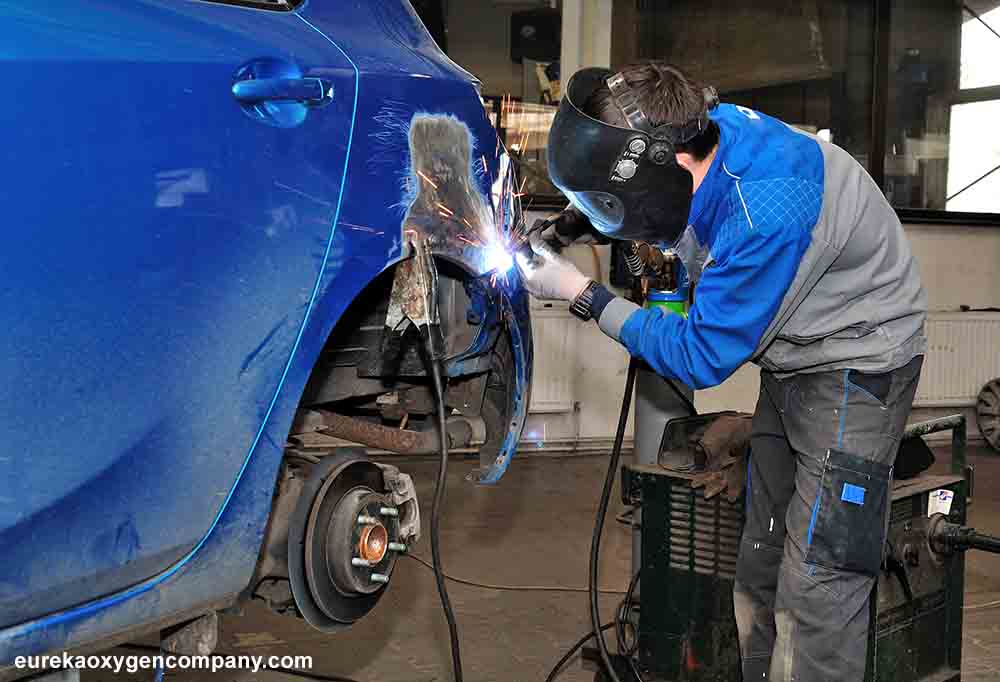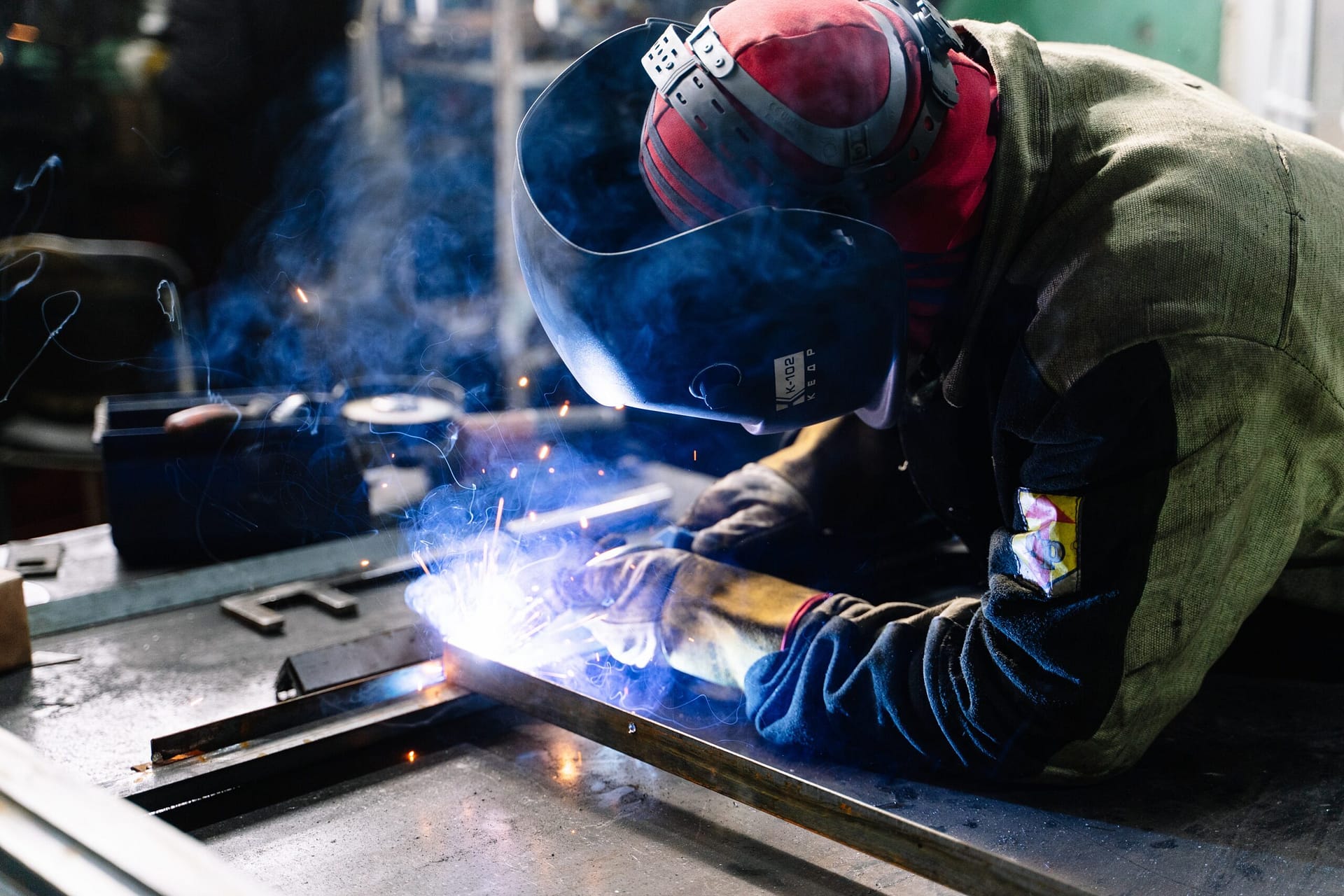Welding issues explained and solved by Montana Mobile Welding and Repair Belgrade Fabrication
Typical Welding Fixing Issues and How to Address Them Efficiently
Welding fixings frequently experience a series of concerns that can jeopardize the honesty of the end product. Common troubles include insufficient infiltration, porosity, and misalignment, amongst others. Each defect offers unique obstacles that need particular strategies for resolution. Comprehending these problems is vital for welders intending to enhance their outcomes and skills. This discussion will certainly explore these common welding fixing problems and reliable methods to address them.
Insufficient Penetration
Inadequate infiltration takes place when the weld steel falls short to completely fuse with the base material, resulting in weak joints and possible architectural failings. This concern commonly stems from insufficient heat input, wrong electrode angle, or improper welding speed. Welders may run into inadequate penetration as a result of a miscalculation of the needed criteria for a particular material thickness or kind. In addition, contamination on the base product's surface can impede efficient bonding, intensifying the trouble. To attend to poor infiltration, welders should guarantee suitable setups on their equipment and preserve a tidy work surface. Routine assessment of welds is suggested to determine any type of deficiencies early, enabling for timely modifications and the prevention of endangered structural stability in welded assemblies.
Porosity
Porosity is a common flaw in welded joints that shows up as little gas bubbles entraped within the weld steel. This defect can jeopardize the integrity of the weld, causing reduced stamina and possible failing under stress and anxiety. Belgrade Fabrication. Porosity typically arises from contamination, moisture, or inappropriate welding methods, which enable gases to get away right into the molten weld pool. To deal with porosity, welders ought to guarantee proper surface area preparation, preserve a clean workplace, and make use of appropriate welding specifications. In addition, selecting the best filler material and securing gas can alleviate gas entrapment. Regular examination and screening of welds can assist identify porosity early, assuring timely corrective activities are taken, therefore preserving the quality and integrity of the bonded framework
Misalignment
Misalignment in welding can develop from different elements, including improper arrangement and thermal development. Comprehending the root triggers is crucial for reliable resolution. Numerous correction techniques are readily available to straighten parts and ensure structural integrity.
Root causes of Imbalance
Welding imbalance often stems from a range of underlying issues that can endanger architectural honesty. One key reason is inappropriate fit-up of components prior to welding, which can bring about spaces and uneven surfaces. Variants in thermal growth during the welding process can additionally lead to distortion, specifically if the materials being signed up with have different coefficients of expansion. Furthermore, poor fixturing and clamping might fall short to hold elements securely in area, resulting in motion throughout welding. Poorly maintained equipment, including welding machines and tools, may present incongruities in the weld bead, further adding to imbalance. Lastly, operator error, coming from not enough training or experience, can also play a significant function in creating misaligned welds.
Improvement Techniques Offered
Attending to imbalance successfully needs a mix of restorative strategies tailored to the certain problems handy. One typical technique is making use of jigs or fixtures to hold elements in the appropriate setting throughout welding, guaranteeing constant placement. Additionally, preheating the products can help lower distortion and improve fit-up. For substantial imbalance, mechanical adjustment strategies, such as making use of hydraulic jacks or clamps, can be used to correct the placement before welding. Post-weld heat treatment might additionally be necessary to alleviate anxieties triggered by imbalance. Ultimately, careful assessment and adjustment during the setup phase can prevent misalignment concerns from ending up being substantial problems, promoting a smoother welding procedure and improving overall structural stability.
Distortion
Distortion is a common obstacle in welding that can arise from different variables, including unequal heating and air conditioning. Understanding the sources of distortion is vital for implementing reliable prevention techniques. Addressing this concern not only improves structural honesty but also improves the general quality of the weld.
Reasons for Distortion
When subjected to the intense warm of welding, materials frequently undergo modifications that can lead to distortion. This sensation mainly develops from thermal development and tightening during the welding procedure. As the weld area warms up, the product expands; upon air conditioning, it contracts, which can develop inner stresses. Furthermore, uneven home heating across a work surface can worsen these stresses, leading to bending or flexing. The sort of product also plays a considerable function; steels with differing thermal conductivity and coefficients of growth may react in different ways, causing unforeseeable distortions. Additionally, bad joint style and inadequate fixturing can add to misalignment throughout welding, increasing the probability of distortion. Recognizing these causes is essential for efficient welding repair service and prevention approaches.
Avoidance Techniques
Efficient prevention strategies for distortion throughout welding focus on controlling heat input and guaranteeing proper joint design. Keeping a constant warm input helps to reduce thermal expansion and tightening, which can bring about distortion. Making use of techniques such as preheating the workpiece can also lower the temperature gradient, promoting uniform heating. Additionally, picking ideal joint layouts, such as T-joints or lap joints, can enhance stability and lower anxiety concentrations. Executing appropriate fixturing to safeguard the workpieces in position further help in preserving positioning during the welding process. Lastly, staggered welding sequences can disperse warm a lot more equally, avoiding local distortion. By applying these methods, welders can greatly reduce the likelihood of distortion and improve the general quality of their welds.
Breaking
Breaking is a typical concern experienced in welding repairs, usually resulting from different elements such as incorrect cooling rates, material selection, or poor joint prep work. The event of fractures can greatly endanger the honesty of the weld, leading to prospective failings throughout procedure. To resolve this problem, welders must first analyze the source, making sure that materials are compatible and suitably selected for the particular application. In addition, controlling the air conditioning price during the welding process is important; quick cooling can induce anxiety and result in splitting. Correct joint design and preparation additionally contribute to decreasing the risk. Applying these strategies can improve weld high quality and sturdiness, inevitably minimizing the chance of cracking in ended up weldments.

Incomplete Fusion
A considerable issue in welding repair services is insufficient combination, which takes place when the weld metal does not appropriately bond with the base material or previous weld passes - Montana Mobile Welding and Repair. This defect can bring about weaknesses in the joint, possibly compromising the honesty of the welded framework. Variables contributing to insufficient combination include not enough warmth input, improper welding strategy, and contamination of the surfaces being signed up with. To resolve this issue effectively, welders need to assure proper pre-weld cleaning and surface area prep work, in addition to readjust their welding parameters to accomplish adequate infiltration and fusion. Routine inspection during the welding process can also help recognize incomplete fusion early, permitting prompt rehabilitative measures to enhance the overall top quality of the weld
Overheating
While welding repair work can boost structural integrity, overheating provides a significant difficulty that can cause product destruction. Excessive heat during welding can change the mechanical homes of metals, resulting in reduced stamina, boosted brittleness, and bending. This sensation is specifically crucial in high-stress applications where structural reliability is vital. Determining getting too hot can involve website visual inspections for staining or distortion, along with keeping an eye on temperature level during the welding procedure. To alleviate the risks linked with getting too hot, welders ought to utilize ideal strategies, such as regulating heat input, adjusting travel speed, and using suitable filler products. Furthermore, executing pre- and post-weld warm treatments can aid restore material properties and improve the overall high quality of the repair service, making sure long-lasting performance and security.
Frequently Asked Questions
What Are the Typical Signs of a Welding Problem?

Just How Can I Test My Welds for Quality?
To evaluate welds for top quality, one can utilize visual inspections, ultrasonic screening, and radiographic methods. Each strategy ensures architectural honesty, identifies problems, and verifies adherence to defined standards, eventually improving the dependability of the bonded joints.
What Security Precautions Should I Take While Welding?
When welding, one should prioritize security by putting on suitable individual safety devices, ensuring appropriate ventilation, protecting flammable materials away, keeping a tidy office, and understanding environments to avoid accidents and injuries.
Can I Repair a Weld Without Renovating the Entire Joint?
Fixing a weld without redoing the whole joint is feasible, depending upon the damages (Montana Mobile Welding and Repair Belgrade Welding). Strategies such as grinding, adding filler material, or making use of a welding process can properly resolve specific defects while maintaining the bordering framework
What Devices Are Important for Efficient Welding Repair Works?
Vital devices for effective welding repair work include a welding device, wire brush, grinder, safety gear, clamps, and filler materials. Each device plays a crucial function in making sure high quality and safety throughout the fixing procedure. Porosity generally emerges from contamination, dampness, or incorrect welding methods, which enable gases to escape right into the molten weld pool. Inadequately kept devices, including welding devices and tools, may introduce disparities in the weld bead, more adding to misalignment. When subjected to the extreme warmth of welding, products often go through modifications that can lead to distortion. Splitting is a typical issue run into in welding repairs, commonly resulting from various elements such as inappropriate air conditioning rates, product choice, or insufficient joint prep work. A considerable concern in welding fixings is incomplete blend, which happens when the weld steel does not effectively bond with the base material or previous weld passes.